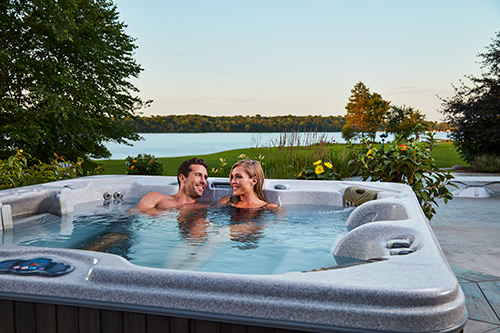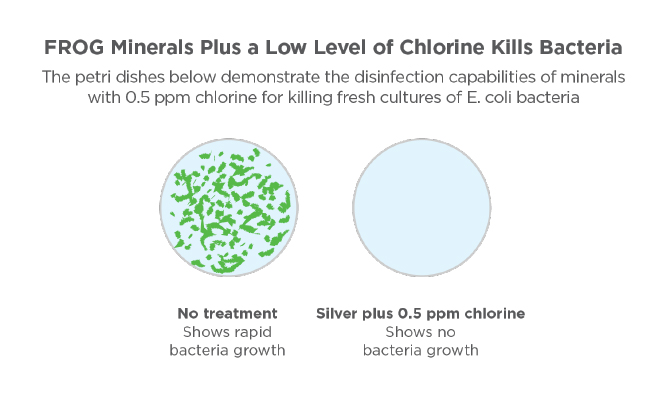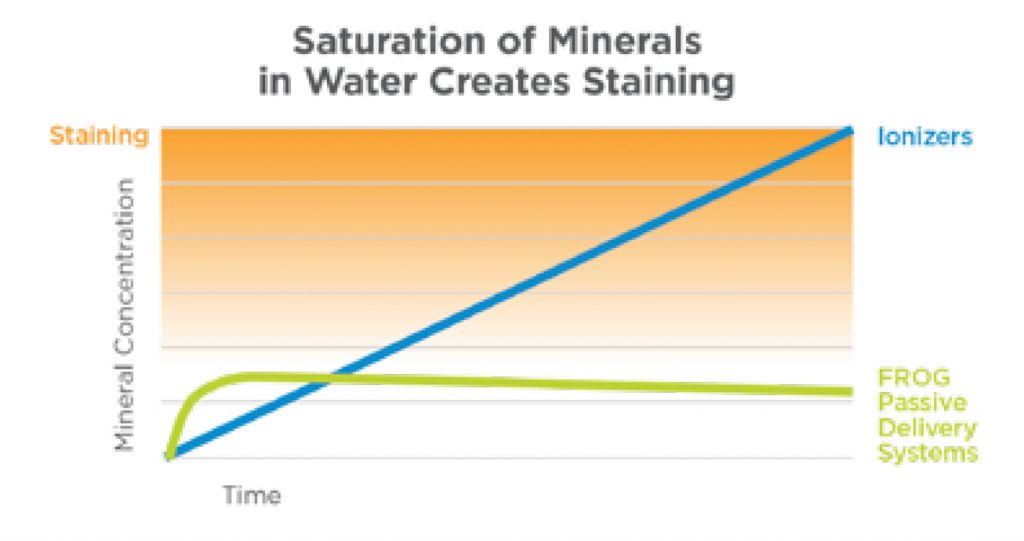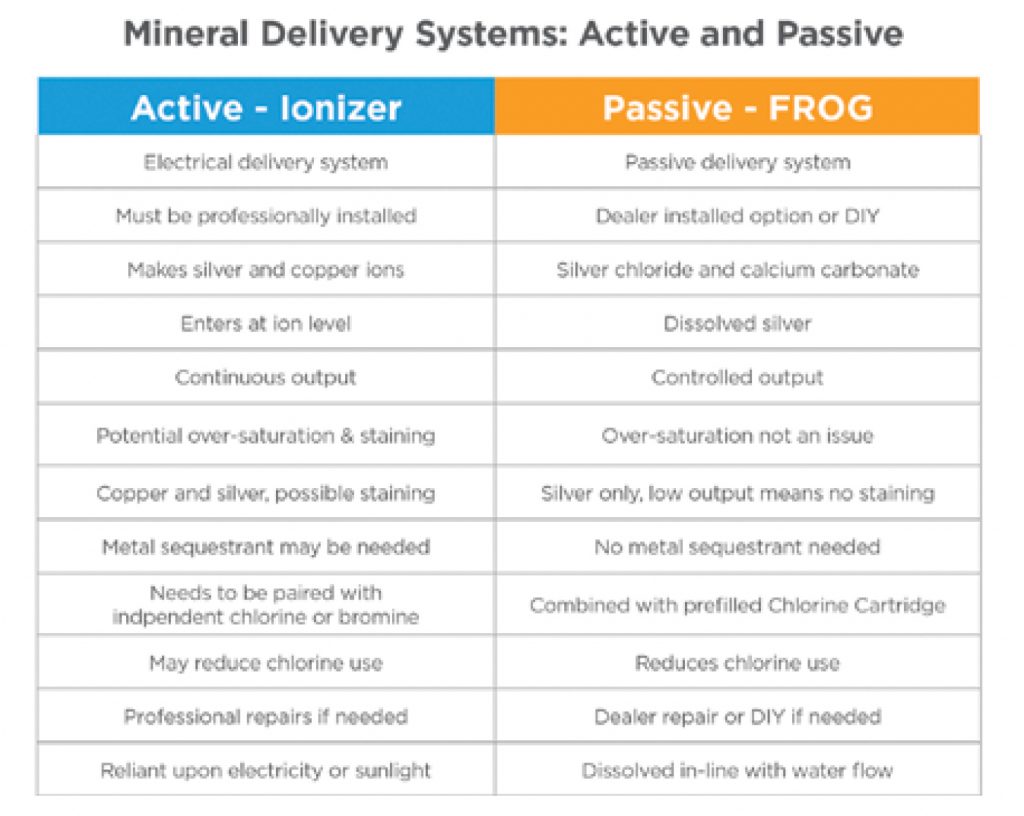IN THE NEWS
Minerals Reduce Chlorine Use—But Not Just Any Minerals

Using less chlorine to keep pools clean is something a lot of pool owners would love to do — especially in light of the current trichlor shortage. Several alternatives present effective and sustainable options: salt systems, ionizers and minerals.
All of these have one thing in common: minerals.
Salt is considered a mineral; it’s used to make chlorine when used with a chlorine generator. Despite the raves of saltwater pool owners, a saltwater pool is a chlorine pool, even though a residual of sodium remains in the pool water. And like a chlorine pool, industry standards are to maintain 1.0 to 3.0 ppm of chlorine for effective sanitization.
Saltwater pools have some drawbacks. Salt is corrosive; it eats through metal and stone and corrodes expensive equipment. pH levels in saltwater pools tend to be higher and require increased monitoring. Plus, cells require regular cleaning and replacement every three to five years.
Ionizers are another alternative. They “release” minerals — silver, copper and sometimes zinc. They depend upon electricity for their delivery system and continuously pump out minerals into pool water.
Mineral systems offer a wide variety of combinations.
Not all minerals are the same
Minerals systems are almost always described as offering silver and copper. While it’s true that both minerals are contained in some systems, they’re not in all systems. Copper is a proven and commonly used algaecide. However, it can cause staining due to oversaturation. Sequestrants may be needed to prevent this.
Silver is known as silver chloride, silver nitrate, silver oxide, colloidal silver or silver ions. All are effective bactericides, it’s simply a matter of dissolution rate and delivery method. Silver is a proven sanitizer with documentation that dates back thousands of years. Early Phoenician records note that water kept in silver vessels remained “cleaner.” Hippocrates promoted silver’s anti-disease properties.
Fast forward through the centuries, and you’ll find that silver has been extensively studied by the World Health Organization1, and Stanford University 2, as an effective bactericide in potable water. Silver is also used in a host of products from toothbrushes to bandages, hand sanitizers and clothes washers.
Silver, in combination with chlorine, is a well-known sanitizer for pools and hot tubs. On a microscopic level, “Silver ions perform their deadly work by punching holes in bacterial membranes and wreaking havoc once inside.” … The silver is not consumed and can leach out of the dead bacteria to kill again and again, thus allowing the silver to continue as an active disinfectant.3
Silver plus a low level of chlorine = a powerful duo
No matter the delivery system, the caveat is that silver alone cannot fully sanitize a pool, so it must be supplemented, most commonly with chlorine in a pool. This means that either a separate, additional delivery system is needed, or one system must deliver both silver and chlorine. Destroying bacteria is a constant battle. Chlorine’s superpower to kill bacteria is proven, but in a chlorine-only pool, industry standards are to maintain 1.0 to 3.0 ppm chlorine — and many pools have chlorine levels higher than 3.0 ppm. At higher levels, chlorine is harsh on skin, hair, swimsuits and surfaces. It can kill the fun quickly. The silver lining is that when combined with chlorine, silver significantly reduces the amount of chlorine needed.
Frog® products contain unique, well-tested silver technology
FROG products use a patented silver technology plus chlorine that effectively sanitizes a pool. They’re registered by the Environmental Protection Agency, EPA, which attests to their many years of testing and proven science. FROG minerals require only 0.5 ppm chlorine for pools, which the chart (FROG Minerals Plus a Low Level of Chlorine Kill Bacteria) shows. This is an illustration of a study. For those who’d like to know more, go to frogscience.com.

It’s all in the delivery
Minerals are dispersed into pool water through active or passive devices. Ionizers, active devices, use electricity to release silver and copper ions — similar to a salt system that “makes” chlorine. Ionizers work continuously, pumping silver, copper and sometimes zinc into the pool.
A drawback is that the output of silver and copper is continuous and keeps building; it can reach oversaturation levels resulting in staining; water must be tested regularly. Green copper and/or black silver stains are difficult to remove. For those who use ionizers, a metal sequestrant may be a good tool in a pool owner’s water care arsenal to prevent staining.
Passive devices don’t use electricity. They include a flow-through cartridge, which can be a floater, a device in
the filter well or an in-line device that contains minerals and substrates. They disperse a mineral level in the water that is not exceeded regardless of pump run time or dial setting. Therefore, staining rarely occurs and sequestrants are not necessary.
The chart (Saturation of Minerals in Water Creates Staining) shows how an active delivery system can result in a buildup of copper and/or silver that reaches saturation and staining versus a passive delivery system that maintains minerals at a steady level.

A passive delivery system can also provide an option of minerals. Many systems combine silver and copper; some are copper only; some are silver only. FROG systems are passive delivery systems. They’re unique in that they combine minerals and a low level of chlorine. They don’t include copper, but the technology includes silver and calcium carbonate, which absorbs acids and helps keep pH balanced and conditions water for softness.
The chart (Mineral Delivery Systems: Active and Passive) shows the differences between passive and active mineral delivery systems.

Know your minerals
The challenge is to be confident of what minerals can offer when it comes to sanitizing pools and the difference in mineral combinations and delivery systems.
Additional systems, including UV, ozone and AOP, can help reduce chlorine demand but do not eliminate the need for chlorine as a primary sanitizer. Chlorine may be a very powerful sanitizer, but its strength can be its weakness. A combination brings out the best in chlorine and minerals.
[1] The World Health Organization, “Silver as a drinking-water disinfectant,” https://www.who.int/water_sanitation_health/publications/silver-02032018.pdf
[2] Stanford News, https://news.stanford.edu/news/2010/august/nano-pure-water-083110.html
[3] https://www.sciencemag.org/news/2015/05/silver-turns-bacteria-deadly-zombies